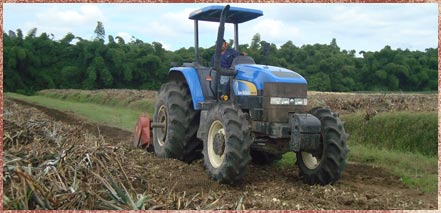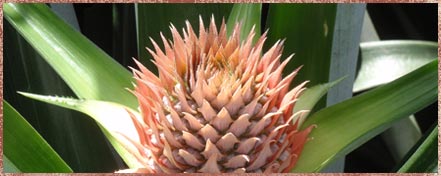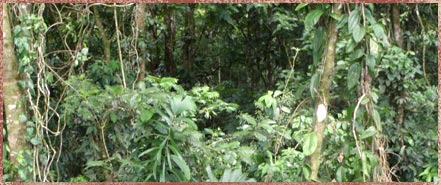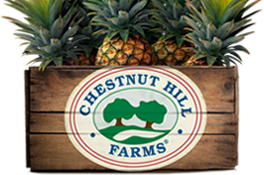 Below are a few of our ongoing initiatives.
Below are a few of our ongoing initiatives.

Pineapple plants after harvest leave an estimated 300 tons of pineapple material per hectare which are re-incorporated into the soil to maintain good soil structure, nutrient levels and to improve Cation exchange capacity of the soil.

Following the incorporation of organic matter into the soil, beneficial bacteria and fungi are also applied to aid in the decomposition of the OM and increase the population of beneficial microorganisms that compete with parasitic soil borne organisms and thereby reduce the use of chemical pesticides. The addition of humic acids is also done to aid in this process.

A beneficial microorganism (Bt) is also used to reduce the application of approved pesticides to control Thecla which is an insect that attacks the fruit.

We maintain over 275 hectares of forest reserve which will continue to be protected and maintained to act as a barrier between pineapple plantings and the major water sources, reduce our carbon footprint as well as to maintain the natural wildlife of the region which includes populations of 3 species of monkeys, three toed sloths, and many classes of birds such as toucans and large and rare parrots. Inhabitants also include deer and wild turkey and two jaguars have also been spotted. Within the wooded areas, the equivalent of 40 hectares of native fruit trees have been planted to provide adequate food for these creatures.

The rainfall in our farms can vary from 3,500 to 5,000 mm annually. That's a lot of rain. That's like pouring between 80 and 125 gallons per sq ft each year. This rain often comes hard and fast which means it's essential to have excellent drainage. The pineapple plants are grown on raised beds to provide good drainage between rows. In addition superficial drains must be made to cross the beds in low areas to evacuate the water to larger secondary drains. If water is allowed to drain too fast, the water will begin to carry soil with it. This is known as erosion and this is a big no-no. To insure that the water does not flow too fast in the superficial drains some pineapple plants are also planted in the bottom of these drains to slow the speed of the drainage water and prevent erosion. The secondary drains are designed by topographers so they can be dug with precision so that the water flow is controlled and erosion is avoided. Grass is allowed to grow in the drains to further prevent erosion and is controlled by cutting and not by the use of herbicides.
Herbicide application after planting is done only on an as-needed basis and not with programmed blanket applications. Spot treatments are the usual form of application and the use of herbicides has been greatly reduced.
Preprogrammed applications of pesticides have been greatly reduced by programmed physical surveys of the fields to determine the real need for an application. It is then applied only if surveys indicate that there is a need.








